We may receive a commission when you use our affiliate links. However, this does not impact our recommendations.
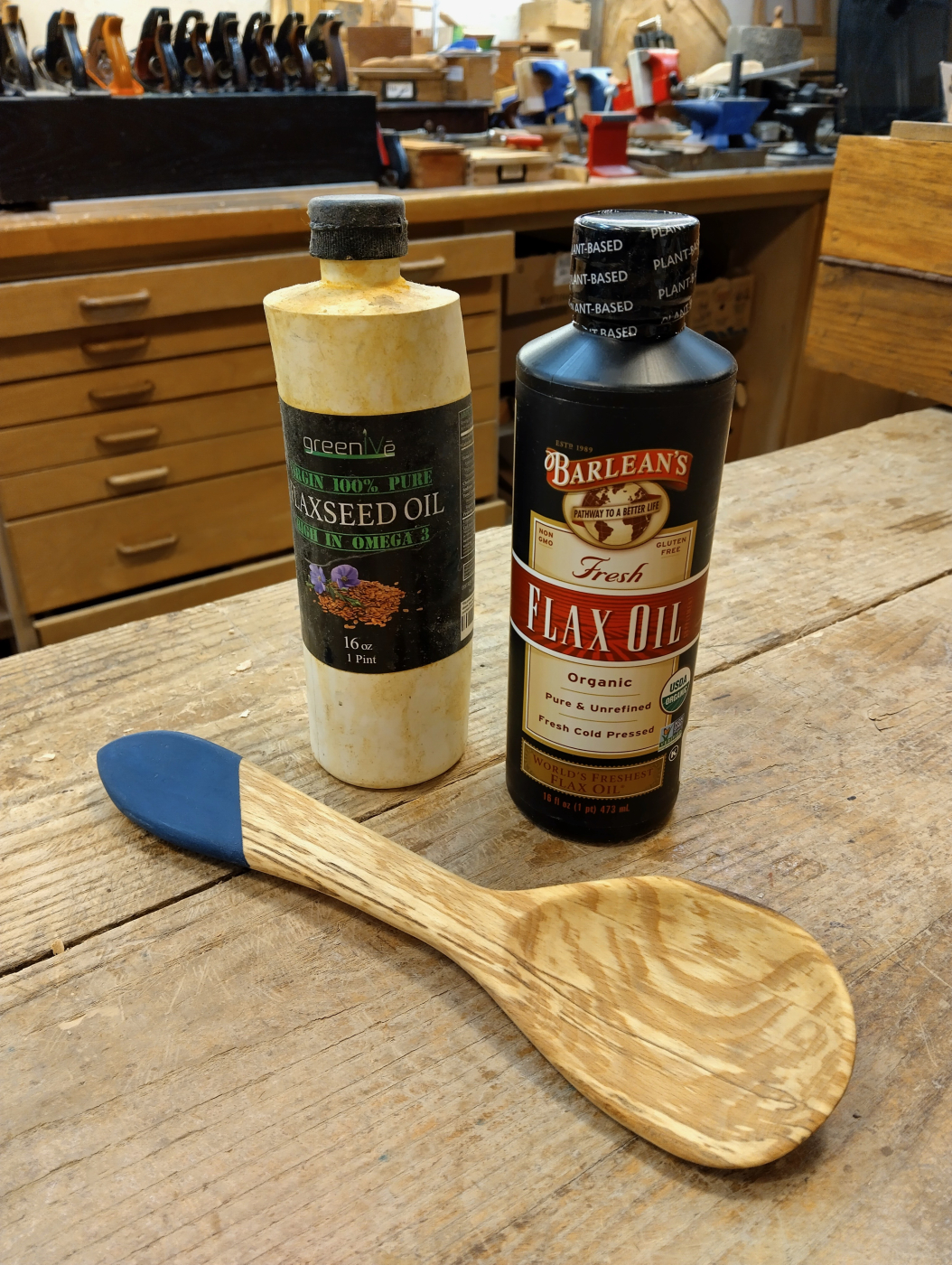
Bottles of 100% Flaxseed oil and a recently finished spalted beech spoon.
As a woodworking teacher and a maker, I’ve tried almost every finish out there, perhaps short of Urushi. I’ve experimented with everything from oil and wax finishes to lacquer, water-based, and shellac finishes. Through these experiences, I’ve discovered that some work better on larger furniture, while others are more suitable for smaller projects. Additionally, certain finishes are ideal for working with kids, while others require a more regimented and careful application that only skilled and patient adults can manage.
Over time, I’ve grown fond of a few types of finishes, each with its own unique characteristics and way of application. In a series of blog entries, I’ll share some of these finishes that have become indispensable in my work. I’ll start with entries focused on finishes that work best with students. Whether you’re a professional teacher or teach children in your family, this list will be beneficial.
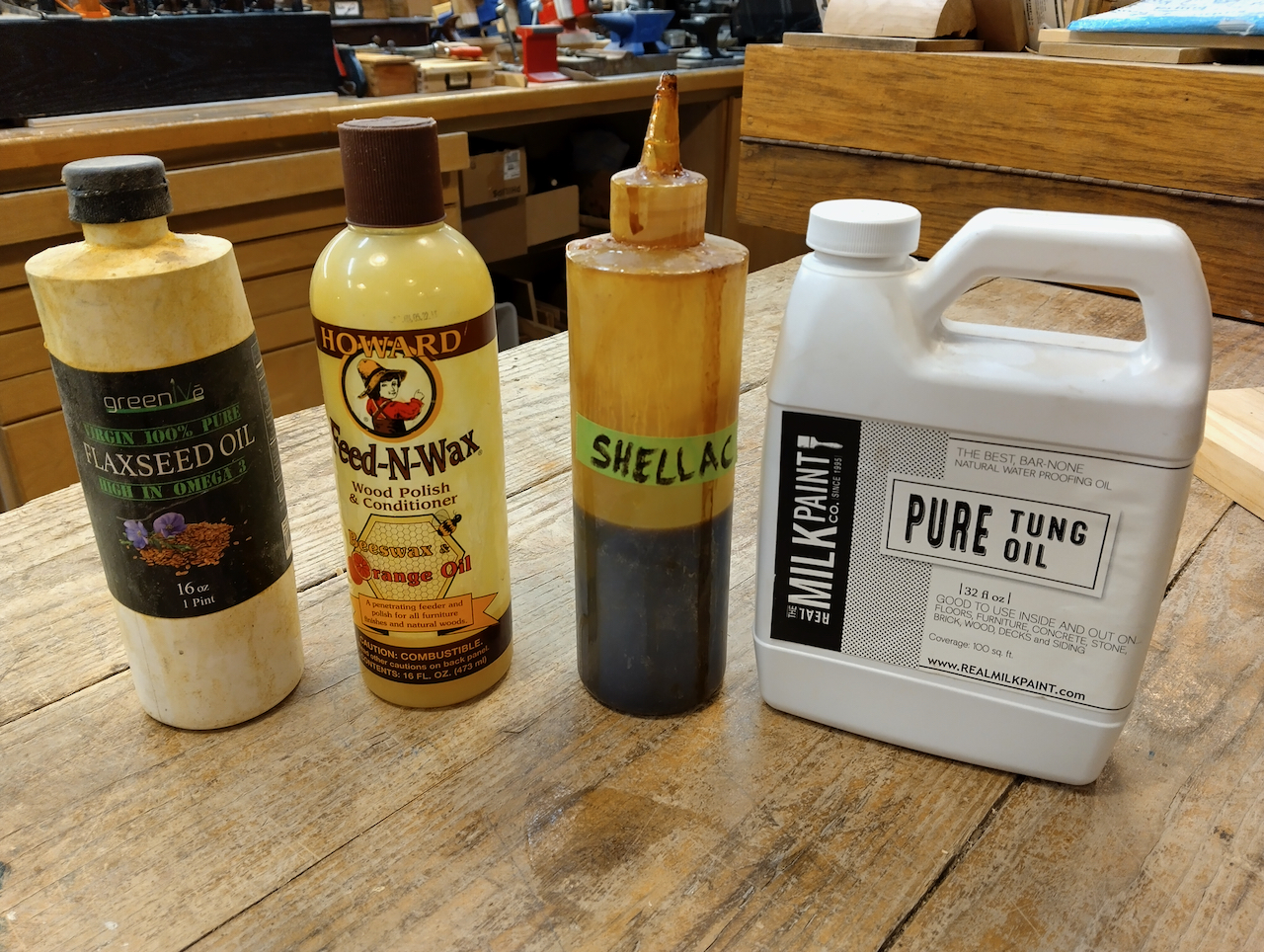
My favorite finishes when teaching children.
Finish Considerations for Young Students
While resilience and toughness are paramount for most professional projects, I prioritize a few other significant considerations that trump resilience when working with kids and students. These include:
- Safe and easy application
- Addressing finishing spills and cleanups
- Fast cure time
For many young children venturing into crafts, it’s essential to consider that their spatial and fine motor skills are just beginning to develop. Therefore, giving them a finish that dries slowly, requires systematic application, emits harmful fumes, or necessitates cleaning with a solvent can set both myself and them up for failure.
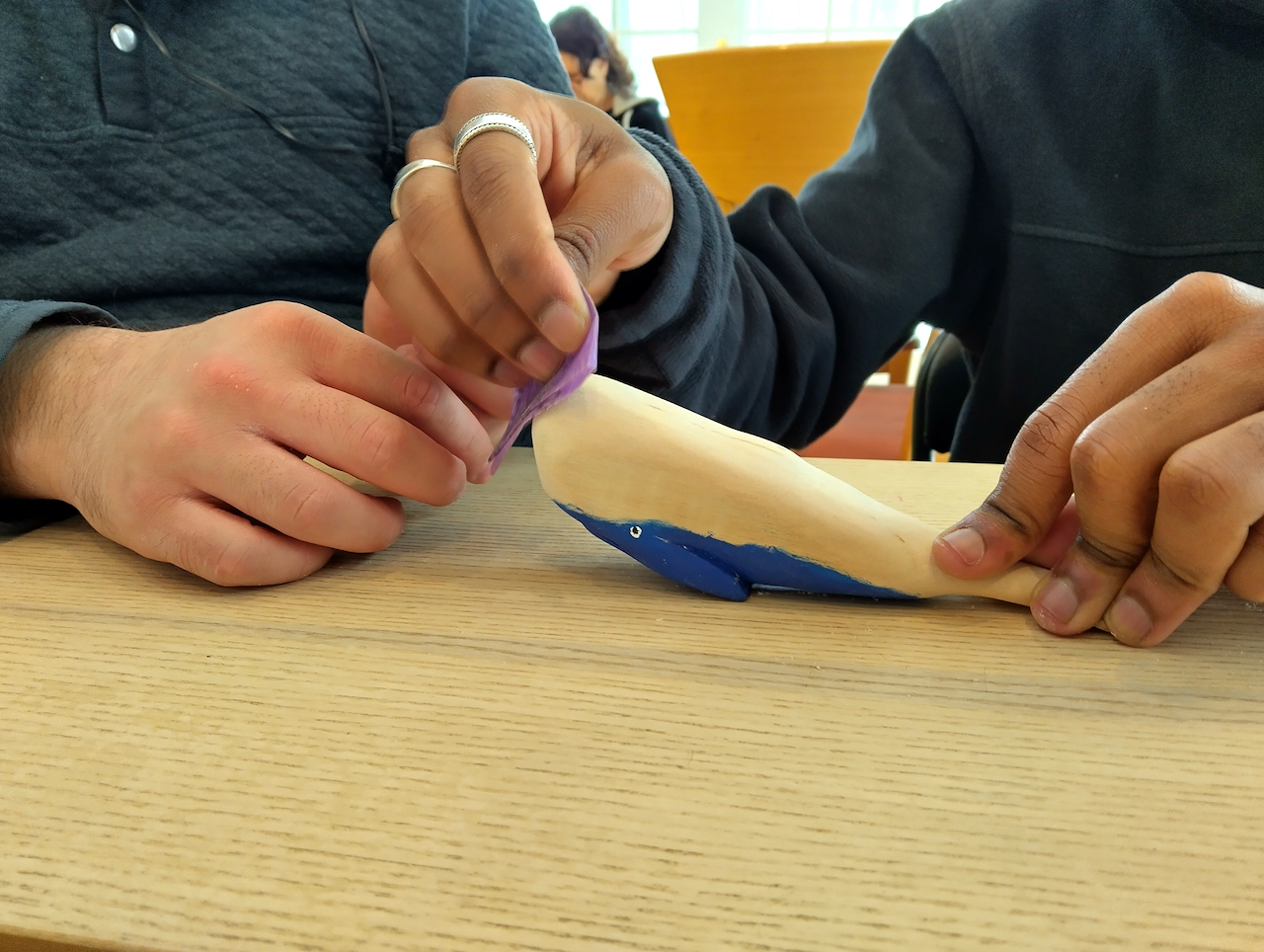
A carving project is sanded with 400-grit sandpaper by the maker and his helper before applying a coat of flaxseed oil.
For example, consider oil-based polyurethane, my go-to finish for furniture needing long-term protection from water spills and abuse. While it’s excellent for professional projects, it’s a catastrophe with young students. It requires systematic application via brushes or, in its diluted version, rags. One must apply it in overlapping rows, mindful of how to handle the object during and after application. Additionally, it requires careful handling during the curing process to prevent dust particles from settling on the surface. Moreover, students need to sand and reapply another coat after a few days to avoid an uneven and coarse finish.
Oil-based wipe-on varnishes are not much better, though they have some advantages, making the application more manageable and less stressful.
The Safest Finish – Flaxseed Oil
Flaxseed oil is my favorite finish for a plethora of children’s projects, including carved animals, toys, and utensils. Here are its most significant advantages:
- Food-safe – in fact, it’s edible (this applies to pure flaxseed oil, not boiled linseed/flaxseed, which has additives)
- Very forgiving in application
- No need for brushes – just use your fingers
- No need for applicators’ cleanup or disposal
- Not sticky during curing – it polymerizes to a semi-dard surface
- Easily cleaned off or washed in a laundry machine (think about kids’ clothes)
After students complete sanding their projects, such as animal carvings, salad sets, butter knives, and cutting boards, I bring over a large cutting board and a bottle of flaxseed oil. I pour a bit on their project and ask them to rub the finish over the wood. After a minute or so, I ask my students to wipe off any excess, and we’re done. The object is ready to be sent home, with one caveat: if the students want the finish to complete its cure time before first use, such as with a cutting board, I advise them to wait two or three weeks. Unlike mineral oil that never solidifies or cures, flaxseed oil will “dry” or harden to form a solid-like film on the surface. As for cleanup, if any oil spills occur, it’s no big deal. I can clean it with a paper towel and soapy water. Any oil on their skin can be absorbed to moisturize their hands. But if students don’t like the oily feeling, I tell them to wash it with soap and water.
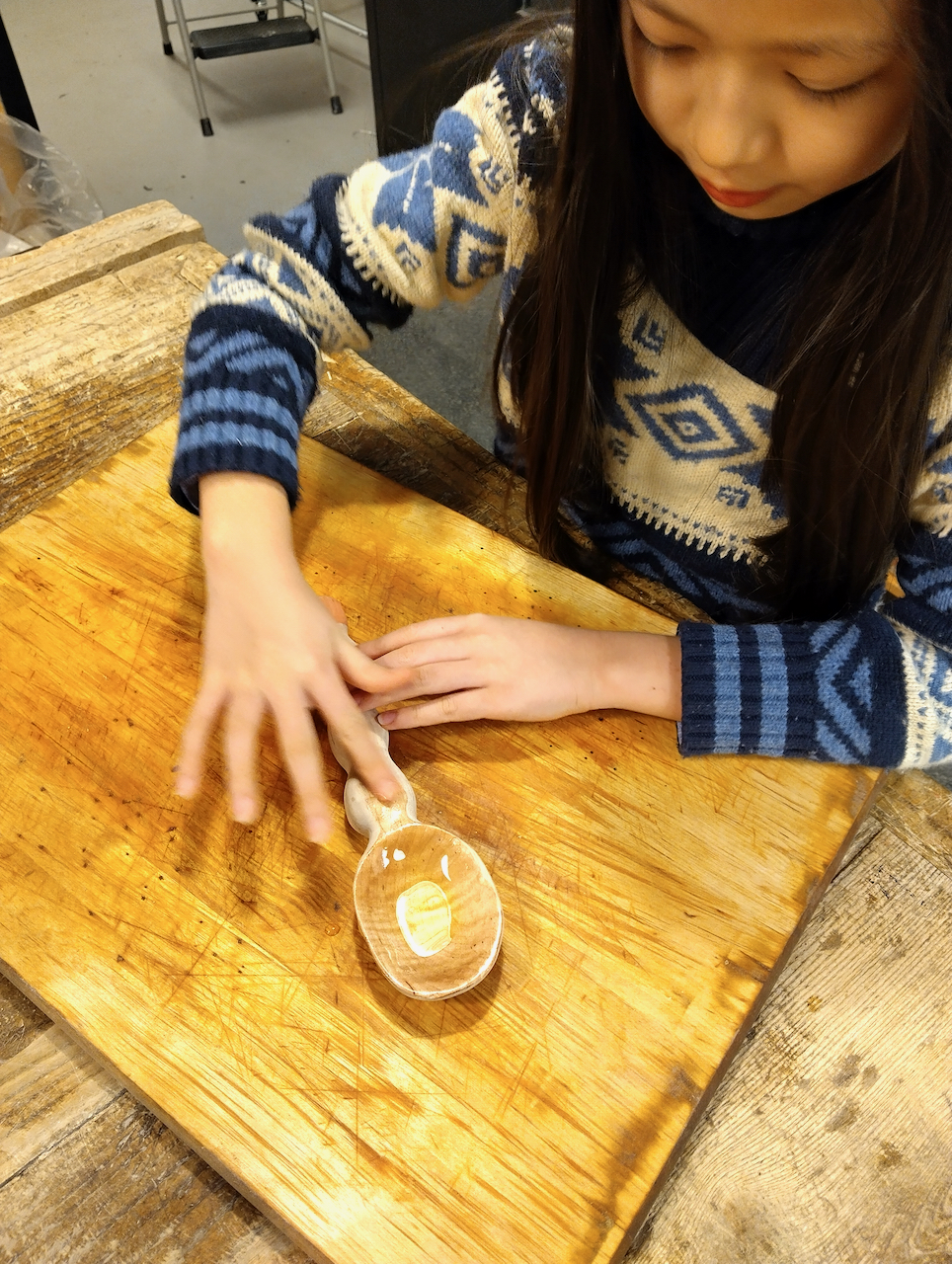
Once my students finishes their spoons, I gather them around to support and witness the transformative moment when the wood is anointed with oil and changes color, revealing its core beauty and the object they worked on commences into a new episode in its life to become a tool. This anointing ceremony is quite lovely as it allows me to talk to them about the history of anointment ceremonies from Samuel, who anointed Saul as the first king of Israel around 1020 BCE, to the recent anointing of King Charles III at Westminster Abbey in 2023.
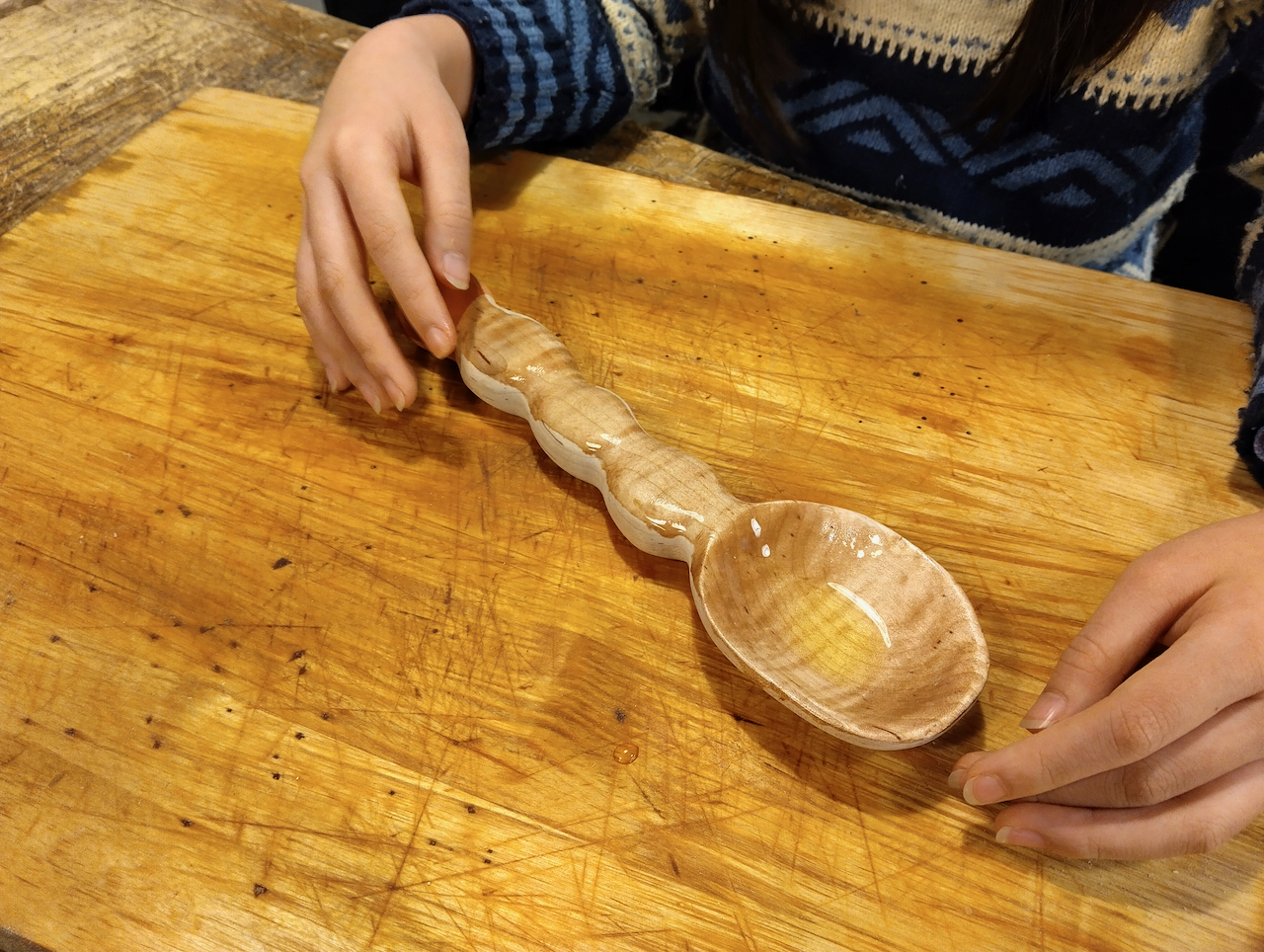

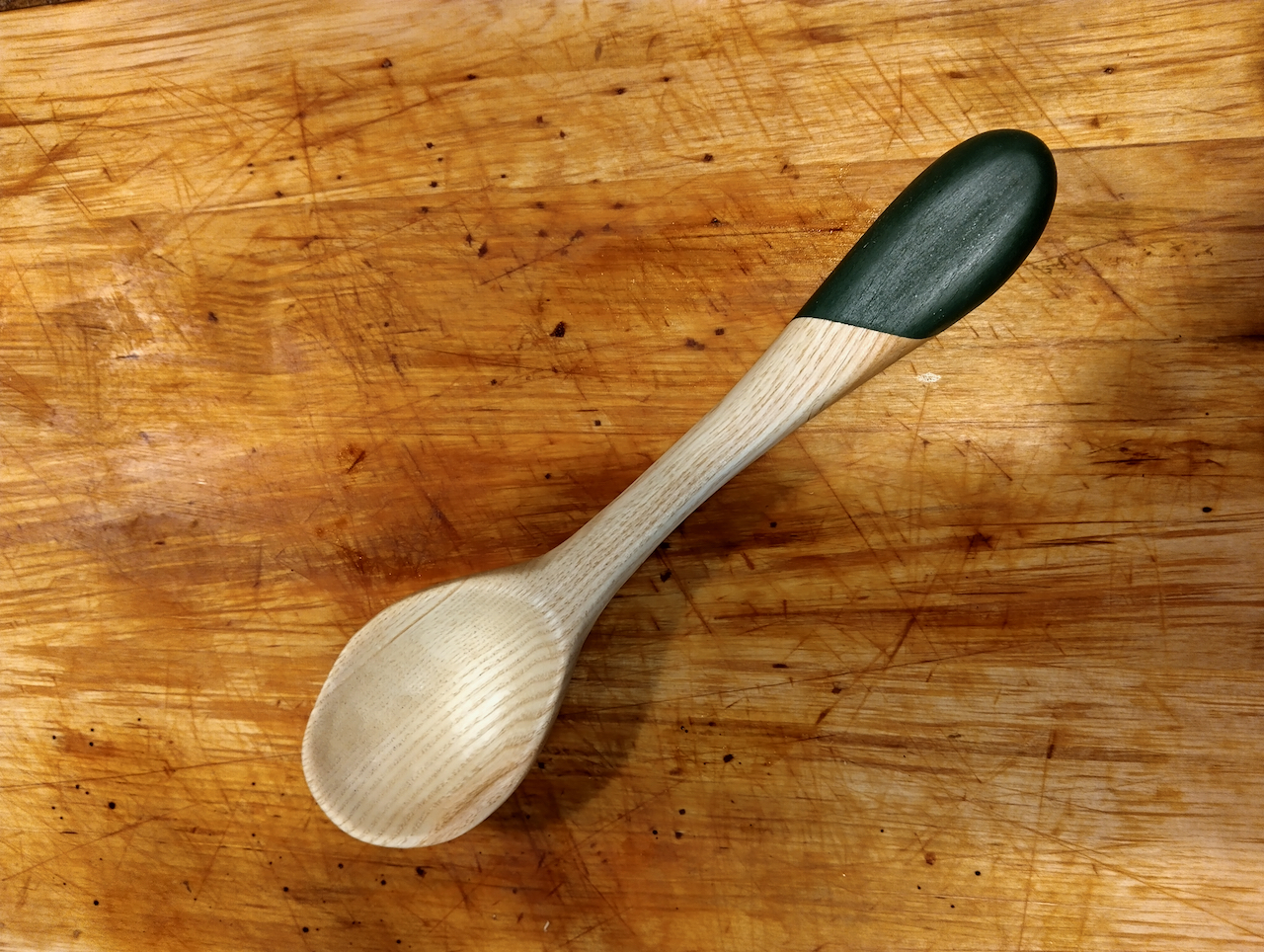
A new spoon is anointed in the 5th-grade class. Notice the milk paint color accent at the tip of the handle. I will talk about milk paint later during this series of entries.


While flaxseed oil has plenty of advantages, it also carries some minor drawbacks. I mentioned the slow cure time earlier, but another shortcoming is that it doesn’t build a robust top coat such as tung oil, shellac, or varnish. Nevertheless, for all its remarkable advantages, it is an excellent finish that is the friendliest in application and the best for wood items that come in contact with food.
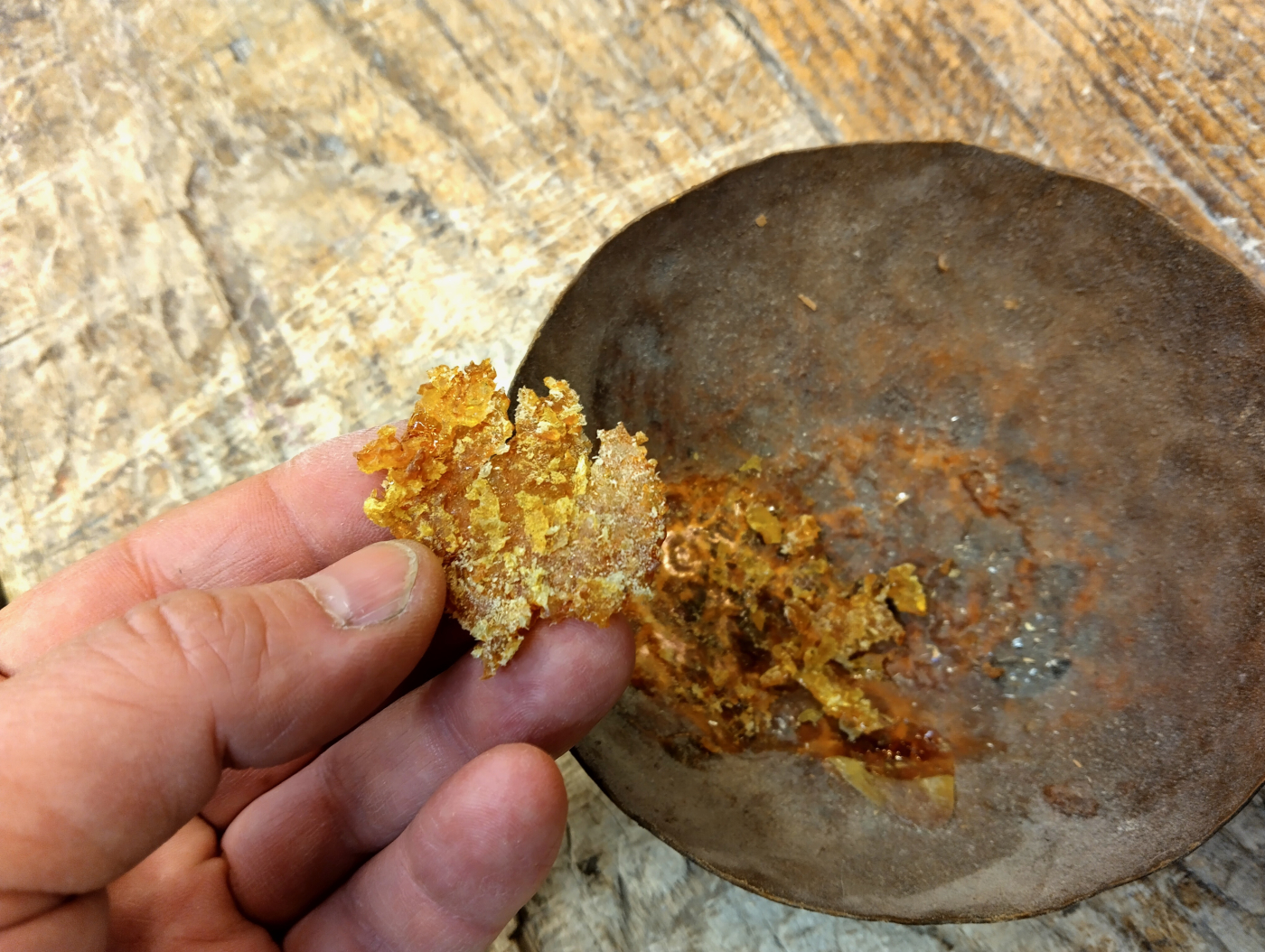
This used to be our flaxseed bowl into which I poured the oil that was used to finish our projects. Over time, the leftover polymerized (absorbed oxygen from the air and solidified). As you can see, the cured oil has the texture and hardness of hard cheese rather than the plastic feel of a hardened polyurethane or oil-varnish mixture. But once the finish percolates into the wood fibers and cures, the wood-finish matrix is quite resilient.
One of my students at Endeavor 21 (a program geared to help adults with learning disabilities and autism), assisted by his helper/mentor, applied a coat of flaxseed oil on the whale they just finished carving.

In the next installment of this series, I’ll delve into the application of Shellac.
Here are some supplies and tools we find essential in our everyday work around the shop. We may receive a commission from sales referred by our links; however, we have carefully selected these products for their usefulness and quality.









The way you describe working with flax seed oil sounds very much like my experience with hemp seed oil. How would you compare the two?
This is a great question. Unfortunately I never tried hemp oil on wood. Does it cure into a hard-ish topcoat?